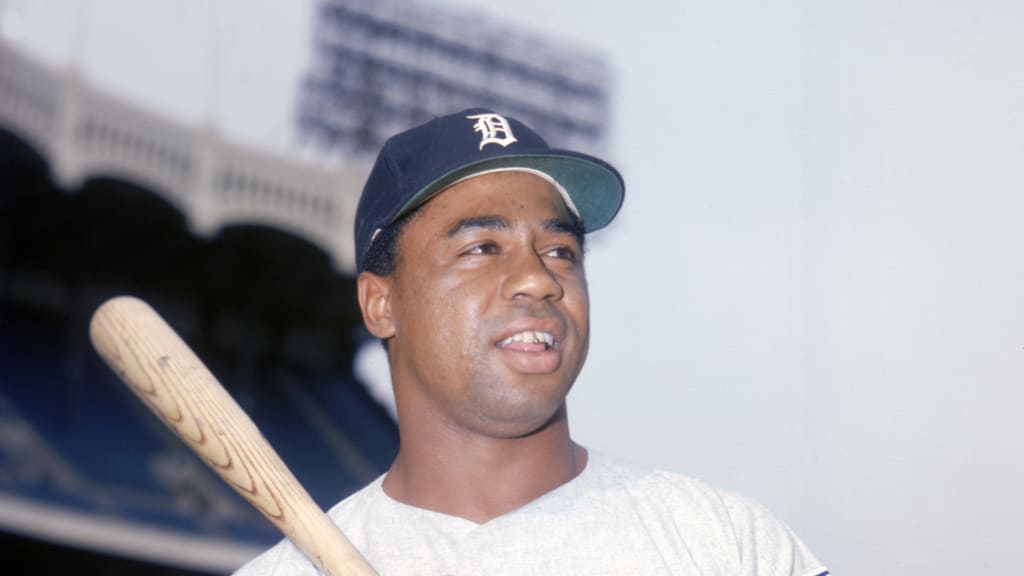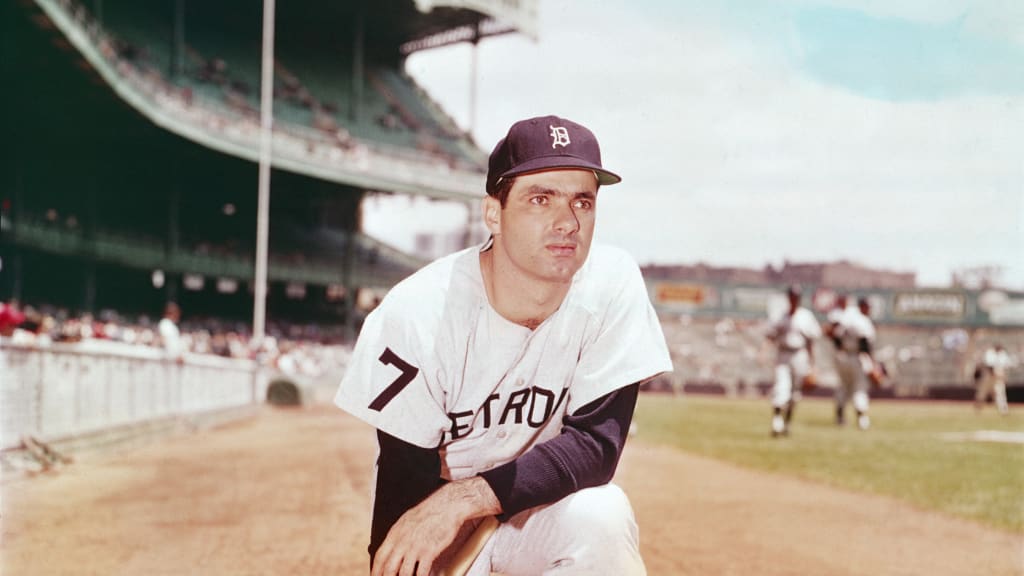
No one loves a good debate quite like baseball fans, and with that in mind, we asked each of our beat reporters to rank the top five players by position in the history of their franchise, based on their career while playing for that club. These rankings are for fun and debate purposes only. If you don’t agree with the order, participate in the Twitter poll to vote for your favorite at this position.
Here is Jason Beck’s ranking of the top five left fielders in Tigers history. Next week: center fielders.
1. Willie Horton, 1963-77
Key facts: Four-time All-Star; led 1968 World Series champion Tigers in average, homers and OPS
Until Lou Whitaker, Horton was the only Tiger to have his number retired without being in the National Baseball Hall of Fame. But beyond his legacy as a hometown hero, Horton was one of baseball’s most-feared sluggers in the mid-to-late 1960s. Signed out of Northwestern High School by the Tigers in the summer of 1961, Horton was an All-Star four years later, leading the Tigers with 104 RBIs – the first of back-to-back 100-RBI seasons -- to go with 29 home runs. In '68, his 36 homers provided the thump for the World Series champions; his .895 OPS that year ranked second to Carl Yastrzemski.
Horton posted at least a 125 OPS+ in eight of his 15 seasons as a Tiger. But his performances in the clutch solidified his on-field legacy in Detroit. His throw from left field to retire Lou Brock at home plate in Game 5 of the 1968 World Series remains one of the most famous plays in franchise history. He hit 7-for-23 with six runs scored, five walks and three RBIs in the Fall Classic.
“What gets overlooked about Willie is how much he studied the game,” Mickey Lolich, the starting pitcher for the aforementioned Game 5, said in his biography. “Thank God he threw out Lou Brock at home plate, but that was the direct result of Horton doing his homework.”
Though injuries knocked Horton off his pace for the second half of his career, his peak years and clutch performances helped power the Tigers through the late 1960s and ensured Horton’s status as a hometown hero.
2. Bobby Veach, 1912-23
Key facts: Led American League in RBIs in 1915, ’17 and ’18
Signed out of the Minor Leagues in his early 20s after converting from the mound to outfield, Veach was one of the great run producers of the dead-ball era, and he has a case as the greatest Tigers left fielder of all time. His 45.8 bWAR over 12 seasons leads all Tigers who played the position. But playing in Ty Cobb’s shadow for a Tigers team that never made the World Series in his tenure confined him to relative obscurity. While Veach cracked double digits in home runs just twice in his career, he was a doubles machine, reaching at least 40 three times. He led the AL with 40 doubles and tied teammate Sam Crawford with 112 RBIs on a 1915 Tigers team that won 100 games but finished second to the Red Sox. Four years later, Veach posted league-best totals for hits (191), doubles (45) and triples (17) while finishing second to Cobb with a .355 batting average.
Veach supposedly had an easygoing personality that clashed with Cobb, leading to their parting once Cobb became manager. According to Veach’s SABR bio, Cobb went so far as to have teammate Harry Heilmann yell insults at Veach to anger him in 1921. He hit .338 that year with 43 doubles, 13 triples, 16 homers and 128 RBIs. Cobb eventually traded him to make room for Heinie Manush.
Speaking of which …
3. Heinie Manush, 1923-27
Key facts: AL batting champion in 1926 at age 24; inducted into Baseball Hall of Fame by Veterans Committee in '64
Manush spent the first five seasons of his 17-year career in Detroit, enough that his name sits on the brick wall at Comerica Park. After three respectable seasons as a part-time player, Manush broke out in 1926, batting .378 with 35 doubles, eight triples, 14 homers and 86 RBIs while forging a role in a stacked Tigers outfield. Three Tigers outfielders that year -- Manush, Cobb and Heilmann -- eventually were inducted into the Hall of Fame, though the 39-year-old Cobb wasn’t an everyday player by then.
The Tigers traded Manush to the St. Louis Browns after his numbers dropped off a bit in 1927. All Manush did the next year was bat .378 with 47 doubles, 20 triples, 13 homers and 108 RBIs, then play another decade after that. None of the three players the Tigers received in return lasted more than three seasons in Detroit.
4. Rocky Colavito, 1960-63
Key facts: All-Star in 1961 and '62; led AL with 309 total bases in '62
Colavito’s biggest claim to fame in Detroit is the trade that brought him there; the Tigers dealt perennial All-Star Harvey Kuenn just before Opening Day in 1960 to acquire the slugger. In terms of WAR, the Tigers got two of the three top seasons from one of the most-feared sluggers of his era. After struggling to a .249 average in '60 and hearing it from fans, Colavito hit .290 with 45 home runs, 140 RBIs and a .982 OPS for a 101-win Tiger team in '61. Not only was he overshadowed by the Roger Maris-Mickey Mantle home run chase, but he was also bested by teammate Norm Cash, who hit an AL-best .361 with 41 homers. But Colavito also led the league with 16 outfield assists that year, rounding out a tremendous overall season that he never matched. He hit 37 homers with 112 RBIs in '62, dropped to 22 homers in '63, then was traded to Kansas City that offseason.

5. Tony Phillips, 1990-94
Key facts: Led Tigers in bWAR from 1992-94
Phillips already appeared on this list, placing fifth among Tigers third basemen. But while Phillips played all over the field in his five-year Tigers tenure, he appeared in left field the most. He was Detroit’s everyday left fielder in 1994, when he was on pace for his first career 20-homer and what would’ve been his third straight 100-run season before the strike cut short his campaign in August. His 4.7 bWAR ranked fifth among AL position players. He led the AL with 132 walks in '93 while splitting his time between left field and second base.



